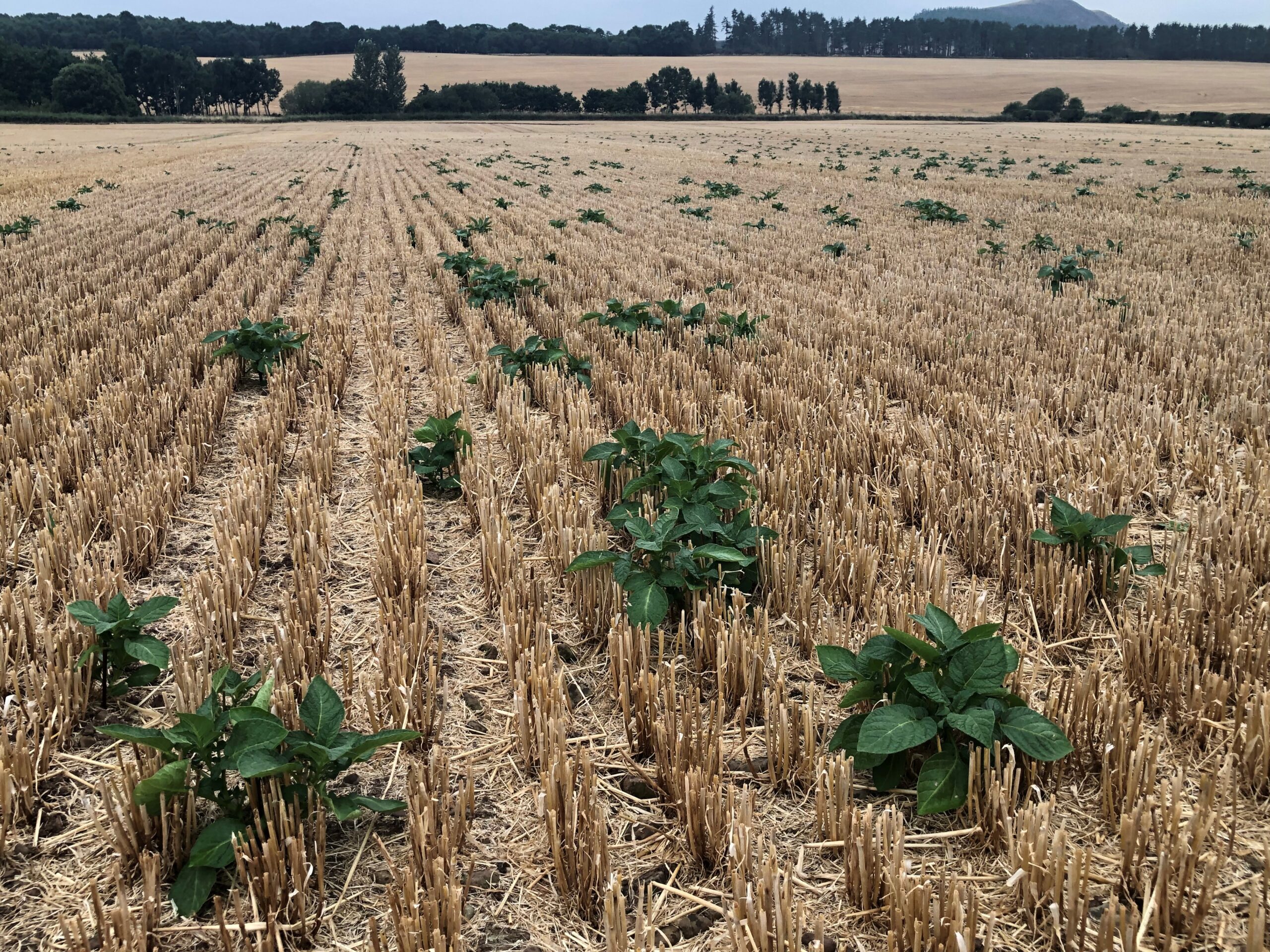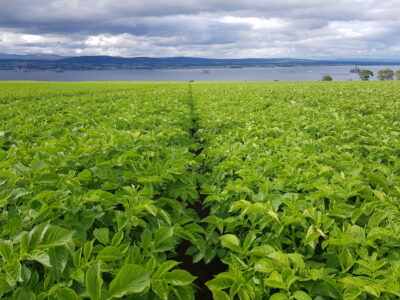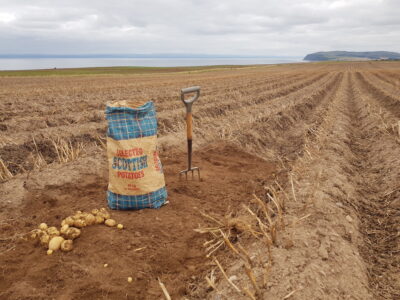
by Donald Paterson, Agronomist
The Scottish seed potato industry has for many decades supplied high quality seed potatoes to multiple countries around the world. However, the increasingly unpredictable climate is triggering a new set of challenges to the industry, where milder summers and winters are leading to an increasing risk of virus transmission in seed crops.
The 2022 growing season has been both warmer and drier than average in the majority of the seed potato growing areas in Scotland. Despite this, tuber numbers on heavier land appear to be around average in many varieties, though lighter land has suffered more from the lack of moisture. The exceptionally warm weather around the end of July and early August slowed tuber growth rates, with some crops being desiccated around 7–14 days later than was originally planned.
This is where the risk lies, as any extension to the growing season significantly increases the likelihood of virus acquisition from the surrounding environment, where aphids are present in the crop.
 Peach potato aphids caught in the suction traps at Dundee and Edinburgh have been well above the 10-year average this summer. Data from the wider network of yellow water traps indicates peach potato aphids were being found in high numbers across a wide geographical area of Scotland, including Grampian, where vector pressure was three times the seasonal average. Peach potato aphids are a vector of both PVY and potato leaf roll virus (PLRV) and present a significant risk to early generation seed where control is challenged by an aphid “biological arms race” and withdrawal of chemistry.
Peach potato aphids caught in the suction traps at Dundee and Edinburgh have been well above the 10-year average this summer. Data from the wider network of yellow water traps indicates peach potato aphids were being found in high numbers across a wide geographical area of Scotland, including Grampian, where vector pressure was three times the seasonal average. Peach potato aphids are a vector of both PVY and potato leaf roll virus (PLRV) and present a significant risk to early generation seed where control is challenged by an aphid “biological arms race” and withdrawal of chemistry.
To tackle this challenge, growers need to be looking increasingly to using Integrated Pest Management (IPM) strategies alongside plant protection products to maintain quality seed.
At Scottish Agronomy, we, with McCain Potatoes, have been leading trials on IPM strategies for the seed industry, including the use of straw mulch which has had significant outcomes. In 2021, our trials in Fife had very high pressure from colonising aphids, predominantly potato aphids but also from peach potato aphids. The results showed that we achieved 40% control of PVYN and 59% control of PLRV from using straw mulch alone.
The result is down to aphids’ host-finding behaviour; to them the contrast between potato foliage and straw is much lower than the contrast between potato foliage and bare soil. If you are planning to use wheat straw mulch in 2023 season on early field generation seed, lay aside and store straw in the coming days.
To further improve control, we have seen an even greater response when using a straw mulch alongside mineral oils up to tuber initiation and alternating applications of systemic insecticides throughout the entire growing season. Maintaining insecticide programmes up to the point of complete haulm death is particularly important to reduce the incidence of virus late in the season. Haulm re-growth is more common in vigorous indeterminate varieties that have been flailed as the first treatment in the desiccation programme. This re-growth is particularly vulnerable to virus ingress in susceptible varieties.
For those growing seed varieties which are more susceptible to virus, a post-burndown and pre-harvest tuber sample can help to give an indication of the primary and secondary virus incidence through the entire crop.
If 100 tubers are tested and no virus is detected in the sample, you can be confident the sample result is below 4% virus. Growers should potentially test more tubers, ideally using at least 200 to proactively manage seed health, but there are cost implications.
Milder winters are also increasing the number of groundkeepers that can survive from year to year particularly of some varieties such as Maris Piper, Cara and Desiree.
Untreated groundkeepers in a cereal or vegetable crop can act as an early source of virus or foliar late blight, while also increasing Potato Cyst Nematode (PCN) levels at least 14-fold within these localised specific groundkeeper zones. Targeting groundkeeper control with glyphosate in stubbles can therefore play a major role in improving seed health.
Improved sprayer technology makes targeting more accurate and helps reduce input costs. Potato volunteers can be specifically detected with cameras mounted along the sprayer boom to target individual potato volunteers by switching spray nozzles on and off. Field evaluations have demonstrated a 77% saving in chemical use. This emerging technology also reduces any potential effects on the surrounding environment by targeting spray applications exactly to where they are required.
No one technique will provide complete control in preserving seed potato health but by using plant protection products alongside IPM strategies and improved technology, seed health can be maintained to ensure growers get the best returns and the industry remains one of the leading providers of seed potatoes in the world.
Scottish Agronomy is trialling IPM in seed potatoes at three sites in 2022, one in Kincardineshire and two in Fife.

Donald Paterson specialises in both cereal and potato agronomy at Scottish Agronomy. He co-runs group agronomy meetings as well as carrying out crop walking for farmer members on a one-to-one basis. Donald worked previously on the trials team, and still enjoys helping out with sowing and harvest at the busy times of year.